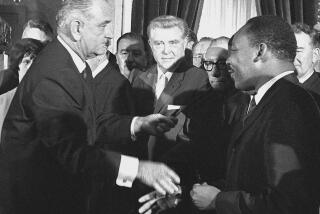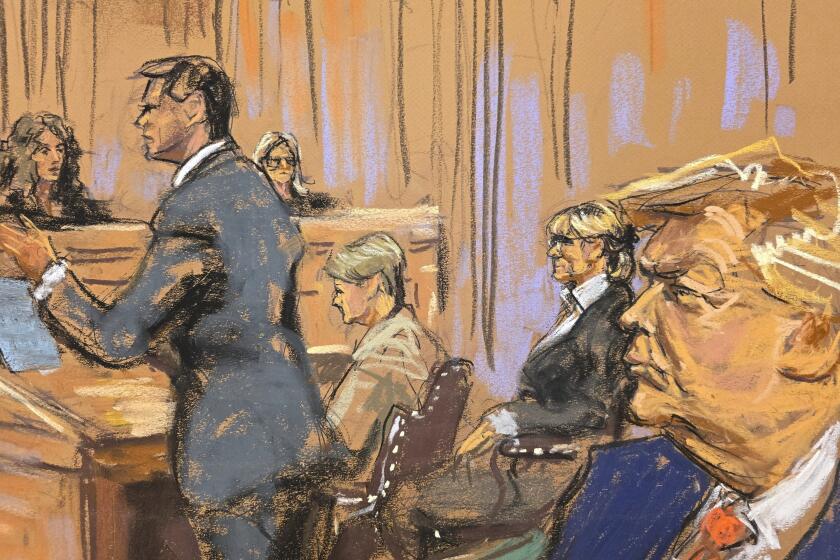After 100 Years, America Still Pays for a Supreme Court Misjudgment
The story began just over a century ago, on June 7, 1892, with a contrived incident on the East Louisiana Railroad between New Orleans and Covington. Homer Plessy, who described himself as one-eighth “colored,” refused to leave a railway carriage reserved for whites under a two-year-old state law requiring “equal but separate” facilities. The ensuing decision in the Louisiana courts went against Plessy; the law stood.
But within the year his case was accepted for review by the Supreme Court in Plessy vs. Ferguson; and the echoes of the ensuing decision remain with us a century after the May 18, 1896, decision.
The issue in the case was segregation in railway carriages in intrastate travel. Beginning in Florida in 1887, Southern states (except for the Carolinas and Virginia, which at the time of Plessy’s case did not have railway segregation laws) had moved to separate the races on the railroads. Once racial segregation had been ratified in the Plessy decision, Jim Crow laws and practices weren’t confined to travel. Jim Crow would pervade schools, courts, public accommodations of every kind--countless institutions and practices.
In his famous account of this critical turning point in American history, “The Strange Career of Jim Crow,” the historian C. Vann Woodward showed what a close call it was. Jim Crow’s history was “strange,” said Woodward, because in the 1890s, race relations were still in a fluid state. There were clearly defined choices. Segregation was not inevitable.
Farsighted people--the black citizens of New Orleans who instigated the test of the law and the noted judge and author Albion W. Tourgee who argued their brief in the Supreme Court--noted an alarming trend toward intensified racial discrimination and sought to blunt it. But the national mood was against them. A president would soon speak of annexing the Philippines as a service to “our little brown brothers.”
Those who wrote Jim Crow laws, however, did not think of themselves as wicked. For them, segregation had a bewitching logic. Facilities need not be identical to be equal. Accordingly, the Supreme Court asserted in the Plessy decision that “distinctions” between the races were not inherently discriminatory. If blacks sensed a “badge of inferiority” in mere legal separation, wrote Justice Henry Billings Brown, “it is not by reason of anything found in the act, but solely because the colored race chooses to put that construction on it.” Thus was legal discrimination transformed--conveniently--from an objective fact into a figment of its victims’ imagination.
When, on another mid-May day 58 years later, the Supreme Court finally reversed Plessy vs. Ferguson and overthrew the “separate but equal” doctrine, it became fashionable in some quarters to warn that law could not change “hearts and minds.” That warning echoed the view of Justice Brown in Plessy that “legislation is powerless to eradicate racial instincts.” Yet both Plessy and Brown vs. Board of Education showed if nothing else the extent to which “racial instincts” are culturally conditioned, and they also demonstrated that where there is will to enforce it, law can change behavior--and for better or worse.
After Plessy, racial discrimination spread and hardened, such that Jim Crow’s time-conditioned origins were largely forgotten. In my youth, segregation was thought of in the South as immemorial custom, so long embedded in regional law and folkways that change was all but unimaginable. The impression was false. Jim Crow had a history and a more recent origin than was usually recalled.
The entrenchment of segregation was not the South’s doing alone; there were unlikely enablers and collaborators. Brown, who wrote the majority opinion in Plessy, had grown up in Massachusetts. The critical precedent he cited to legitimize segregation laws came from a pre-Civil War Massachusetts decision by the abolitionist-minded Judge Lemuel Shaw. Justice John Marshall Harlan, who wrote a powerful dissent, predicting that the results of the decision would be as baneful as in Dred Scott, was a Kentuckian, a former Confederate officer and slaveholder.
Even a casual examination of the Plessy case shows that the stakes in racial discrimination by law were clearly perceived, by Harlan and others. Unfortunately, a deluded Supreme Court followed Brown, not Harlan, and rejected “colorblindness.” We have been paying for the misjudgment ever since.
More to Read
Sign up for Essential California
The most important California stories and recommendations in your inbox every morning.
You may occasionally receive promotional content from the Los Angeles Times.










